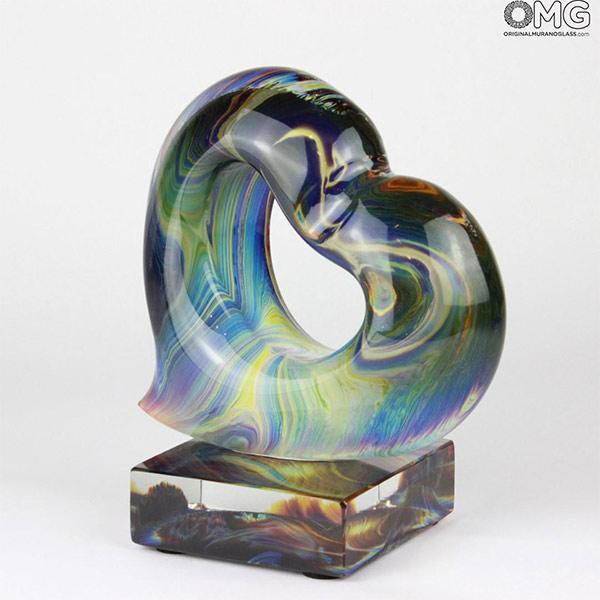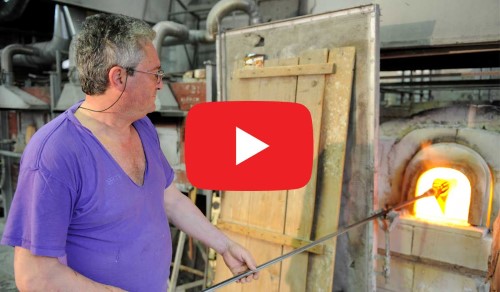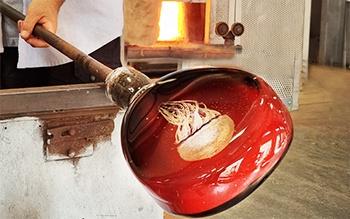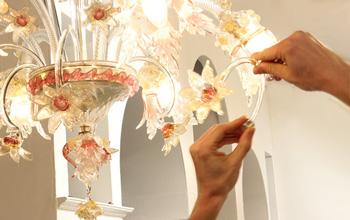An evolving universe in a single artpiece in Chalcedony and Glass
Murano glass artwork is a particular and defined universe which has never ceased to evolve, redefine, investigate and reinvent itself, since the 1291 with the issuance of the Decree ratified by Serenissima to move the furnaces to the island.
The cases in which, over this path of more than seven centuries, particular compounds were forgotten and then rediscovered are not lacking in the chronicle of this fabulous story. In this long period, indeed, there were times when the search for ancient formulas was really central to the Murano Masters’ horizon of interests.
The second half of the nineteenth century is emblematic. Considering that until about 1850 the aesthetic experiment was still dominated by Renaissance and Baroque taste, in the following decades it was possible to undertake an in-depth analysis of archaeological finds collected in various museums, including Etruscan, Pompeian, Roman, Phoenician and Assyrian objects.

The rediscovery of chalcedony glass
In this somehow philological spirit of glass studies there is also the rediscovery of chalcedony glass, whose composition had been encoded in the lagoon towards the middle of the fifteenth century, but then, after about a couple of centuries, felt into oblivion.
In the middle of the eighteenth century this resource of muranian glasswork arose from her ashes thanks to the Master Lorenzo Radi, a curious and great innovator in the field of artistic production. This true reconquest of the creativity allowed the island to regain one of the most precious gems of its own collection.
The 3 peculiarities of chalcedony glass
The name. The reference to gemstones or value stones is not entirely confined to metaphor, in this case: in fact the chalcedony glass takes its name from a variant of quartz, the one in which it appears as a compact mass of microcrystalline silica, already used in antiquity as a decorative element for the creation of cams and carvings.
The variety. But the chromatic range of chalcedony glass does not stop at a single type of stone. In the vast and unpredictable color varieties that this vitreous typology embraces, it is possible to recognise all the nuances of agate, onice, malachite, lapis lazuli and jasper.
The composition. Particularly difficult to realize, chalcedony glass has the peculiarity of joining the canonical glass sphere with silver salts and other coloring oxides: this extraordinary chemical process, coupled with the talent of the Masters of Murano, allows the creation of wonderful works in which an opaque background is streaked with enchanting warm and dark shades, a real turbine of lights and shadows capable of ravishing even the eyes of the most experienced observer.
/httpdocs/images/articles/tecniche/calcedonio













